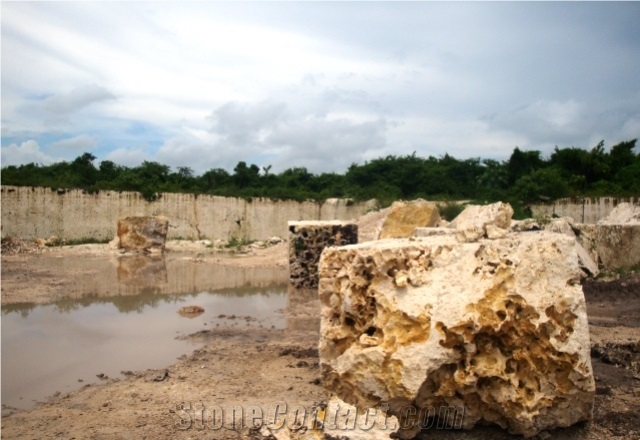


The Commissariat Store Museum exhibits a pit, generally thought to have been used for brining, however, we may consider that it was actually a pit for slaking the lime. The quicklime or ‘un-slaked lime’ produced in these kilns was added to water in a pit and soaked for a period of time, thus becoming hydrated or ‘slaked’ and ready for use. KAVHA still features an intact kiln built in 1845. Mortar was made by burning the stone in a kiln, often built on the side of a hill, to facilitate loading the wood as fuel for the fire. Walls were built without any damp-proof measures which led to rising-damp problems. In 1832, it was reported that four hundred convicts on Norfolk Island were shorn to provide the hair for this purpose. Internal walls were rendered with an inch layer of porous mortar, generally mixed with horse hair, and finished with a thin setting-coat of lime and sand. External walls formed with roughly dressed blocks were jointed together with mortar, also made from this stone, and rendered with a smooth slaked lime-sand mix. Rubble calcarenite was used for roads, water systems, foundations and walls. Restoration and preservation of buildings and structures continues to this day using appropriate and traditional methods to retain the integrity of our built heritage in this area. And so began repairs and alterations to the existing structures in the Kingston and Arthurs Vale Historic Area (KAVHA). John Adams II, grandson of Bounty Mutineer John Adams, showed particular skill and began attending to the Island’s stone cutting requirements and revitalising the convict lime kilns to manufacture lime. The Governor of NSW sent Mr H J Blinman, a stone-mason and plasterer, to Norfolk Island to develop the skills of the Islanders in this craft. The second British Settlement from 1825 followed with a building programme primarily of calcarenite, leaving for us today a remarkable heritage landscape and fine collection of Georgian buildings. The Pitcairn Islanders took possession of the Kingston buildings upon their arrival in 1856 having no experience in working in stone or burning lime, many buildings began to fall into disrepair. Geology of Norfolk Island, Helen Sampson) The first experiment was with bricks and mortar, but as the process for making bricks was not successful, the building programmes from 1792 onwards were entirely of wood and stone. By 1793 sacks of lime were being sent to Sydney aboard the Kitty. Good quality lime was produced and a lime mortar could now be made. It would appear that the discovery of this resource was made by accident rather than as a result of scientific investigation. It is not surprising that the Emily Bay deposit was not recognised earlier since the settlers, being from Britain, would not have been familiar with limestone in this form it is a rare occurrence in the British Isles. Chalk and limestone deposits were always sought after since they were a necessary part of any building programme. Documentation indicates it wasn’t until 1791 when the aeolianitic calcarenite around Emily Bay was recognised as being a form of limestone suitable for building and the manufacture of lime. It was a few years before the First British Settlers recognised the functionality of this stone. Excavations in the 1990s uncovered hearth stones of rubble and slabs of massive calcarenite formed into a marae. The earliest settlers on Norfolk Island were the Polynesians around c. I’ll refer to it as calcarenite from here on in. The stone ranges in quality and is identified separately as rubble or massive calcarenite – the difference between the two can be attributed to the density of the bedding planes the rubble being least dense of the two. Geology of Norfolk Island, Helen Sampson)Ĭalcarenite is a type of limestone, the carbonate equivalent of sandstone, composed mainly of coral, shells and extinct creatures, compressed over aeons into a solid mass of calcium carbonate, commonly referred to as ‘coral stone’. Here they were cemented together to form a sedimentary rock known as calcarenite, probably 120,000 years ago.

These eroded fragments were blown by the prevailing southerly winds in to the vicinity of Point Hunter (Lone Pine and Setta Point) and Nepean Island. Following on from the volcanic period, sea levels fell and rose multiple times extensive reef areas were exposed and eroded. Both Norfolk and Phillip Islands are almost entirely volcanic except the Kingston lowlands and Nepean Island.


 0 kommentar(er)
0 kommentar(er)
